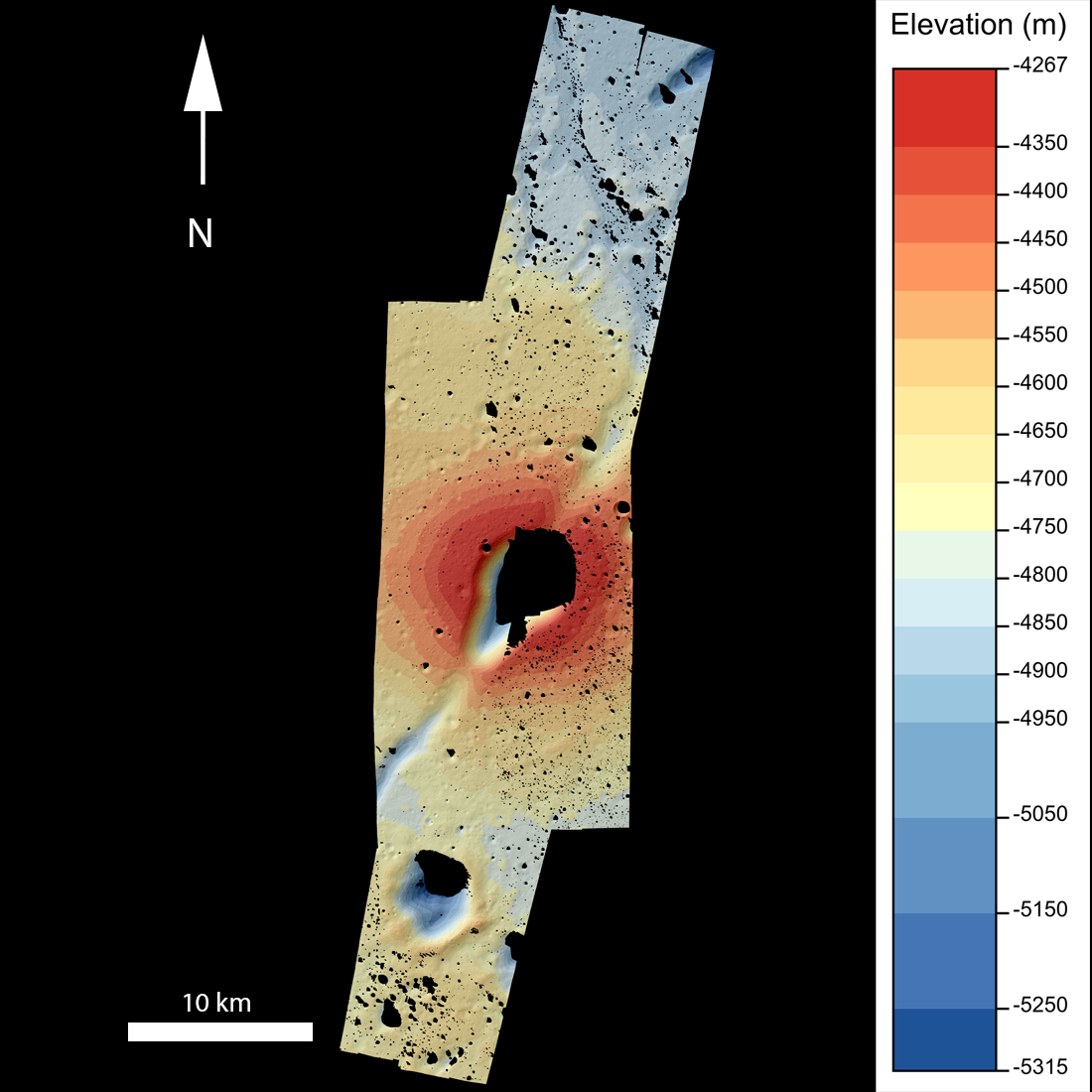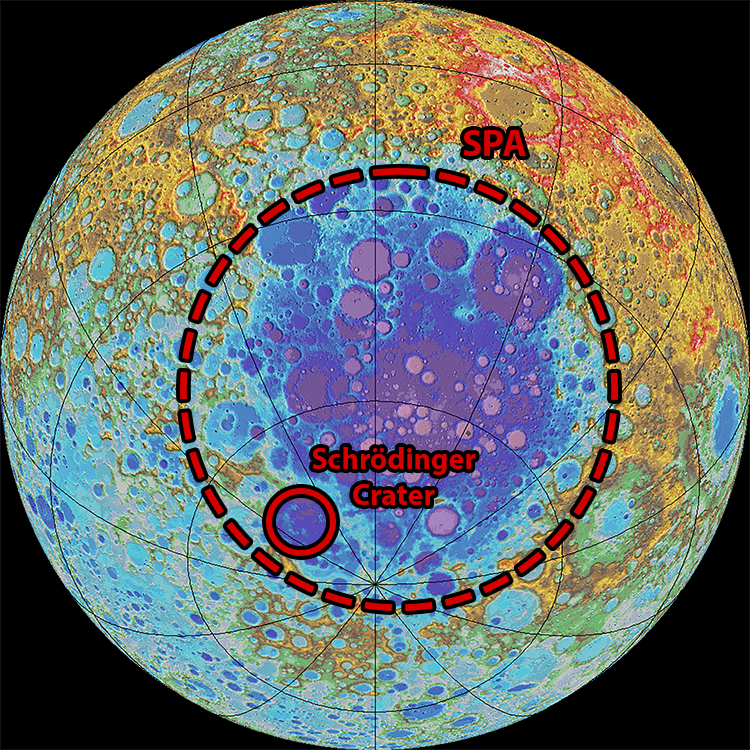
The Schrödinger G pyroclastic vent is a fascinating site with huge potential for future exploration of the Moon. Located within the Schrödinger impact basin, Schrödinger G is a large, cone-shaped volcanic formation that rises about 415 meters above the basin floor and whose lower reaches are in permanent shadow. Permanently shadowed regions (PSRs) may contain frozen volatiles (possibly water ice) which would be valuable for in-situ resource utilization (ISRU) – that is, using local materials to support exploration activities. Resources may be also found in the volcanic material itself. Lunar pyroclastic deposits are formed by explosive volcanic eruptions that emplace glasses and fragments of rocks (clasts) from deep within the mantle. These materials also contain metal oxides (FeO, TiO2, etc.), from which breathable oxygen can be extracted, and the metals may be used in manufacturing. This twofold potential of resources for ISRU – hiding within the shadows of the volcanic crater and in the erupted materials – makes the Schrödinger pyroclastic vent a prime target for landed missions to the Moon in the future (see "A sortie mission to Schrödinger Basin as reconnaissance for future exploration").

In addition to its ISRU potential, the Schrödinger G site is of great interest to planetary scientists. Its location within both the SPA and Schrödinger impact basins, the oldest and the second youngest large impact basins on the Moon respectively, presents the opportunity to determine the ages of each basin. Any samples retrieved from the Schrödinger basin by future explorers would allow scientists to study material from deep within the lunar crust or upper mantle and help further constrain the timing of the early bombardment history of the Moon (see "The geology of Schrödinger basin: Insights from post–Lunar Orbiter data"). Planetary scientists are also interested in investigating the materials such as volcanic glasses and orthopyroxene that were brought to the surface by the pyroclastic event that created the Schrödinger G vent. In particular, the glasses are known to contain traces of water, revealing a much wetter Moon than previously recognized. Studies of pyroclastic deposits like this one can thus help us to understand processes within the Moon’s interior. One study uses this DTM mosaic to measure the volume of juvenile material that makes up the vent in order to decipher some details about the eruption process from which it formed (see "On the eruptive origins of lunar localized pyroclastic deposits").
The DTM mosaic, and the individual DTMs from which it was made, were released to the Planetary Data System (PDS) in January of 2021 for use in support of new scientific studies of the Schrödinger pyroclastic vent. These DTMs will be useful for planning landings and traverses for future landed missions to the lunar surface and for further exploration of the mechanisms of volcanic processes on the Moon.
Download this DTM mosaic here
Related Featured Images:
Sometimes You Just Need To Vent
Craters on the Schrödinger Pyroclastic Cone
Published by Thomas Tyburczy on 4 March 2022